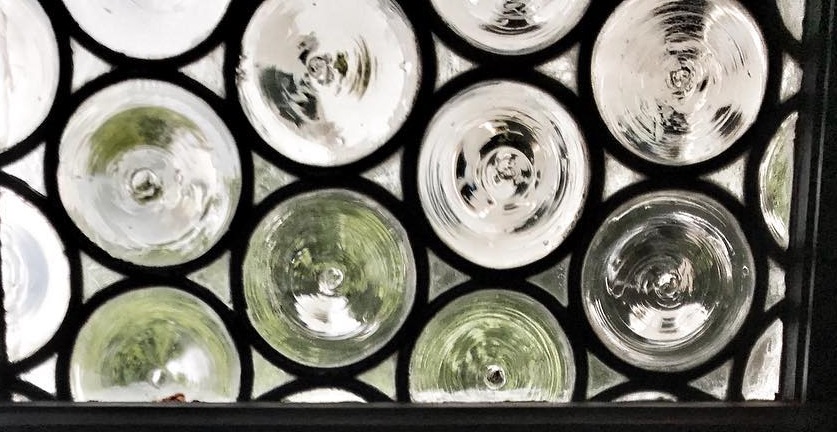Menu


Crown glass, which was invented in the 1320s, is considered to be one of the earliest types of glass production.
Beginning with a gather (a ball) of semi-molten glass on the end of a blowpipe, the process is gradually expanded and opened outwards, much like a “crown.” The final product is called Crown Bullion Glass.
Afterwards, the material is transferred from the blowpipe to a pontil, also known as a “punty” iron rod, which is then opened and flattened by heating and spinning it rapidly.
The disc’s outer edges are trimmed away, and the remaining ornamental bullseye centre is used as a decorative element on windows, doors, sidelites, and transoms, among other applications.
Crown glass manufacture, along with blown glass or plate glass manufacturing, was the most popular type of hand-blown glass used to make sash windows.
The technique was invented and mastered in the 1320s by Rouen and other renowned French glassmakers, and it remained popular until the 19th century, when it was superseded by float glass and other machine created glass.